EXERCISES IN TOPOGRAPHY OR SZYMBARK OF THE TIMES OF ZYGMUNT HAUPT | MAREK DZIEDZIAK
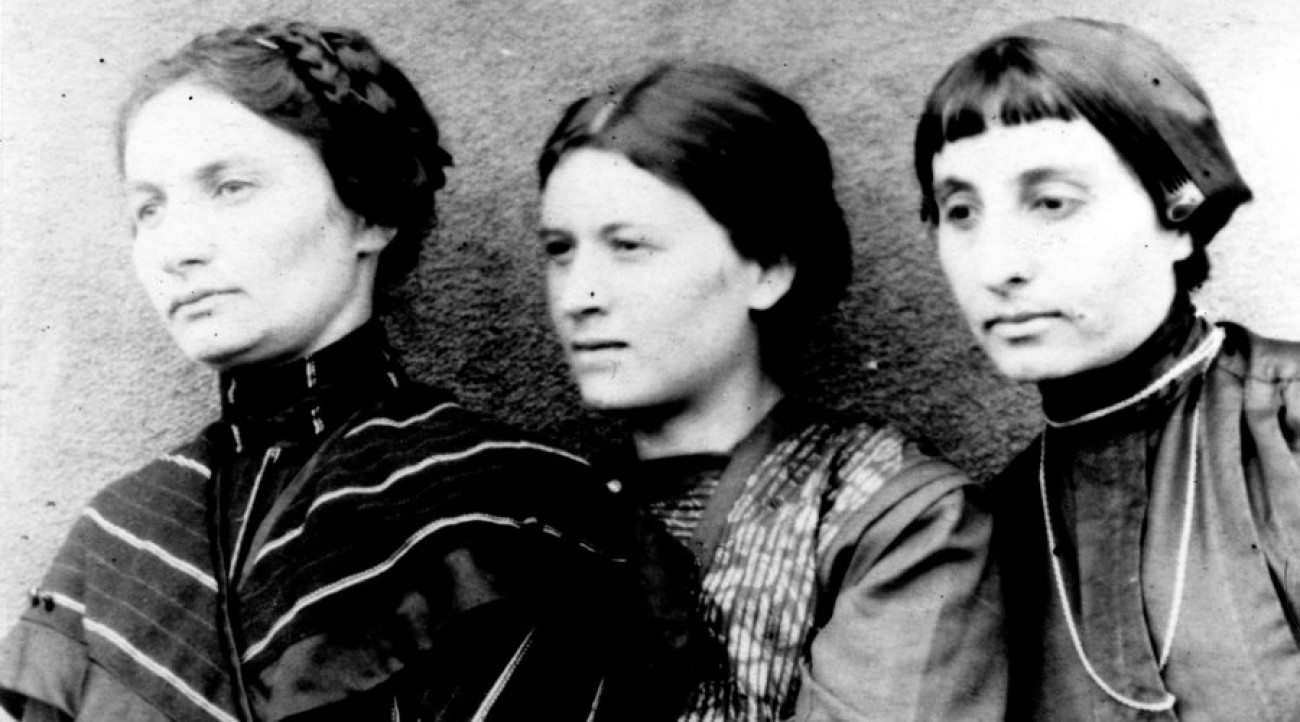
The Zygmunt Haupt Festival in Gorlice is a perfect opportunity not only to discover the creative work of a writer and painter unknown to the broad public, but also to discover the places where he spent time and created. In his letter to Haupt, Jerzy Stempowski wrote the following about his book “Pierścień z papieru”:
As a painter with more of a static imagination, you evoke separate images without taking care to put them into continuous sequences. This magic was known to Petrarch. He described all the places he had been to as if in exercises in topography.*
Let us then try, as a part of these exercises, reach one of the towns close to us which can be found within the pages of the above-mentioned novel. The town that was considered charming not only by Zygmunt Haupt.
In Szymbark I lived in a tiny annex, the door off-kilter but the place itself very clean, with one or two little pieces of furniture, antiques, muslin curtains at the window, a candle in a candlestick made of blue enameled metal, spare matches for guests, the bed made so neatly that it emanated a sweet scent (lavender?), and the breakfast they sent me, swear to God! to bed and they had snobby English breakfasts there, soft-boiled eggs in mugs, jams, little bars of butter, biscuits, a bit of this, a bit of that. And in the evenings we would lie, we would actually lie in front of the living-room fireplace, beech blocks burning and crackling, and what also crackled (…) were the chestnuts, “marrons,” as we baked them over these blocks. (…) Stanisława, Mrs Stasia, would lie in her evening gown, and she was the one celebrating this baking of the chestnuts for us, whose mouths were watering.
This is how, in an exceptionally painterly manner, Haupt immortalised the image of the Bystrzyca manor in Szymbark in his “Pierścień z papieru.” Modest, wooden, but cosy, open, and warm. And very modern, with electricity, gas heating, and running water. The peasant neighbours would say in frank admiration:
And the manor has the click, there’s water running out of the wall, and they stoke with stink.
He went there several times in the thirties to visit his Lviv friends Stanisława and Karol Groblewski. He probably met the hosts during his studies at Lviv Polytechnic University. “Mrs Stasia” – Stanisława Groblewska was at the time a “star” of the Lviv Tennis Club. This well-educated woman, familiar with the Lviv intelligentsia and sports environment, could certainly be impressive. Not only due to her sports achievements: she was awarded the title of the Champion of Lviv several times, and twice she became the Champion of Poland, playing doubles with the outstanding Jadwiga Jędrzejowska. After her father’s death this strong and modern woman was forced to, as she wrote herself, change her light tennis outfit to a “stable jacket.” In the thirties, together with her husband, she was managing 50 hectares of rocky piedmont, specialising in the raising of mountain cattle. However, she did not quite forget about her passion for sport (in the manor gardens a tennis court found its place) nor about her Lviv, Cracow, and Warsaw friends, who gladly visited the hospitable Groblewski home. Zygmunt Haupt wasn’t astonished only by the manor’s ambiance. In a story told in “Pierścień z papieru” he also brought up the wonderful relations between the parents, especially between the mother and the adolescent son Janusz.
Still, not only the Groblewskis of Bystrzyca were trailblazers of farm tourism. Others also hosted numerous summer visitors. Guests were received with similar courtesy in the extensive manor of Maria and Kazimierz Groblewski in Łęgi, in the modest Kazimiera Słowikowska manor house and in the Sikorski villa in Rola. However, the most attended place was the estate in the central part of Szymbark, called “the Castle.” Visitors were probably attracted by the romantic ruin of a 16th century fortified manor house, but also by the good leisure conditions. The estate owner Zbigniew Lucjan Sękiewicz, in the years 1927-28, erected a palatial summer villa. Since 1934 the villa and the entire estate were managed by his cousin Maria Kuźniarska and her son Janusz. In the summer of 1933, writer Maria Dąbrowska vacationed there. However, the rainy weather was not suitable for walks, therefore she probably gave herself over to writing, continuing her novel “Noce i dnie”. The Kuźniarskis’ well-awaited summer included guests from Warsaw: the Drozdowskis and Świerczewskis, as well as Antonina and Tadeusz Grodyński. The latter one was a professor of higher economics at the Higher School of Commerce and at the University of Warsaw, and in the years 1927-39 he performed high-level duties at the ministry of treasury where he was a vice-minister, and for a few months he even personally managed this important department. The most common visitors at the larch manor and villa were Maria Kuźniarska’s brothers: the priest Kajetan Łańcucki – a parson at Lubatowa, and colonel Seweryn Łańcucki with his family.
The leisure conditions were excellent for numerous visitors from the capital, Silesia, Lviv, or Cracow. In the summer villa, apart from modest yet comfortable rooms, bathtubs were prepared for curative baths. It was difficult to get bored here. The attractions comprised walks and horseback riding, and sleigh parties in winter. The evenings would be spent in the gardens or at the villa terrace playing cards, listening to the pathephone or the radio. The visitors were also welcome to use a well-equipped library. The hosts also took care of good cuisine. Breakfast was served in the bedroom and dinner, tea, and supper at the larch manor. Meals were very diversified, rich in vegetables and fruit grown in the manor garden. Father Ludwik Wachowicz, who was the parson in Szymbark at the time, estimated in the parish Chronicle that during the summer some 250 people would come to the village, and they would “praise the beautiful surroundings, the wholesome air, good drinking water, and pleasant baths in the river”.
Pre-war Szymbark was visited not only by wealthy clients but also by pedestrian tourists and bivouack-lovers. Thanks to the activists of the Polish Tatra Society in Gorlice (Witold Tokarski, Kazimierz Zabierowski, Karol Kosiba, among others), after 1932 a tourist route was marked from Stróże through Szymbark up to the Magura Małastowska peak. At the river’s meander, beneath the ruins of the castle, boy scouts would set up their camps. The local post office was crowded in summer, and postcards with beautiful Szymbark sights, published in large numbers, were unceasingly popular. The increase in the tourist activity in Szymbark was connected to the growing interest in leisure in the previously misappreciated Beskid Mountains, from Nowy Sącz to Sanok. Krystyna Pieradzka wrote about this in her tourism coverage “Na szlakach Łemkowszczyzny”:
(…) the tourist activity is expanding to manors and manor houses, to major villages, to tourist, boy scouts, summer, military and work camps etc. (…). For this reason the summer and curative economy of the Carpathian area should be under the authorities’ special protection.
That is alsol what happened in Szymbark. In the summer of 1938, the village was visited by the Voievodeship Healthcare Commission from Cracow in order to officially recognise it as a health resort. There was a chance of granting a government subvention for the accommodation base expansion, especially in peasant houses, for electrical lighting, the development of bath resorts at the river Ropa and setting up a seasonal transport route with rail stations in Zagórzany and Stróże. The worsening of the international situation a few months later caused the state authorities to think about an accelerated process of raising military fortifications at the state borders rather than about building guesthouses.
In spite of this, July 1939 saw Szymbark yet again full of summer visitors who raved about the charming fortified manor and the unique lake at the forest landslide. They enjoyed baths in the river and walks in the forest, with curiosity they listened to the local legends and watched the diverse customs and religious ceremonies. Maria Cegielska, the daughter of Franciszek Rziha, owner of the oil mine adjacent to the Groblewski estate on the Bystrzyca, mentioned that:
On July 16th a kermess took place on occasion of the Holy Mother of Szkaplerz festivities. During my childhood it was for me the most important holiday attraction. I pillaged the stalls with the enthusiasm equal to that of the Szymbark country kids, admiring those little roosters made of sheet tin, the gingerbread hearts and the chickens-on-a-stick that flapped their wooden wings. (…) Everyone would attend the kermess: peasants, local landowners and summer visitors, the post office manager with his spouse, and the teachers, the boy scouts from camps set up at Ropa’s meander. The limes gave off an aroma around the old wooden 18th century church, the bees buzzing around their blossom.
The idyll of the carefree holiday at Szymbark ended six weeks later. The war, which broke out on September 1st 1939, changed everything. Stanisława Groblewska became a hero of the Gorlice resistance movement, the colonel Seweryn Łańcucki went to war, while Tadeusz Grodyński and Zygmunt Haupt emigrated and never came back to Poland. After the war, Szymbark’s dream of becoming a fashionable summer resort never came true. Today, as charming as ever, it still awaits summer visitors and tourists. Or perhaps a new Zygmunt Haupt?
*Unless otherwise stated, this and future quotations are free translations of excerpts (translator’s note).
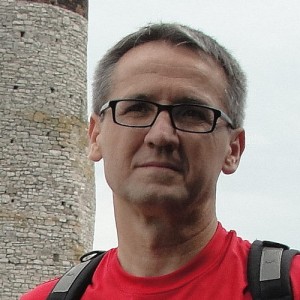 MAREK DZIEDZIAK | History teacher at the Szymbark School Complex, initiator of educational events and several regional history publications.
MAREK DZIEDZIAK | History teacher at the Szymbark School Complex, initiator of educational events and several regional history publications.





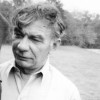
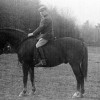

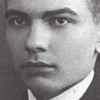
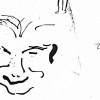
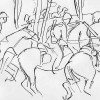
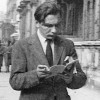
FIND US